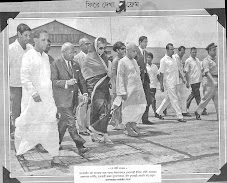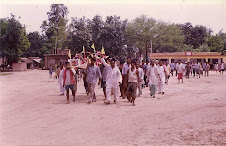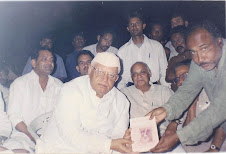Mullaperiyar: A Plea for Sanity
Ramaswamy R Iyer
The safety of the Mullaperiyar
dam is not a matter for judicial
determination. This dispute is
eminently a case for an agreed
settlement by amicable talks
between Kerala and Tamil Nadu.
Talks at the intergovernmental
level must be supplemented by
civil society moves to bring the
people concerned in the two
states together.
T
he Mullaperiyar issue has flared
up again, presumably because the
empowered committee is likely to
submit its report shortly, and the Supreme
Court may make a pronouncement. Feel
ings are running high in both Tamil Nadu
and Kerala. Pleas for sanity may well
fall on deaf ears, but must nevertheless
be made.
An account of the dispute and its his
tory was published in this journal earlier
("Towards Good Sense on Mullaperiyar",
6 January 2007). Without going over the
entire ground again, the issue can be suc
cinctly stated as follows. Tamil Nadu wants
the flows (from the dam to the beneficiary
area in the Vaigai basin) to be maintained
and increased, and for this purpose it
wants the water level in the Mullaperiyar
reservoir to be raised to the design level of
142 ft. Kerala is worried about the safety of
the old dam, in particular from the point of
view of the people living downstream of
the dam, and wants the water level not to
be raised above 136 ft, and if possible to be
reduced to a lower level.
Issue of Safety
Thus, the issue now is the safety of the
dam, or so it appears on the surface,
though under it lies a deep, longstanding
sense of grievance in Kerala over the 1886
agreement between the Madras Presidency
and the princely state of Travancore.
Leaving that history aside for the time
being, and confining ourselves to the
question of dam safety, it is unfortunate
that the Supreme Court has allowed itself
to be embroiled in it. Dam safety is not a
matter for judicial determination. One
wishes that the Supreme Court had asked
the two state governments to resolve the
issue themselves by mutual agreement, or
directed the InterState Council, a consti
tutional body, to intervene and bring
about a settlement. Instead, the Supreme
Court has not merely taken up the matter,
but has performed the executive function
of setting up an empowered expert com
mittee, whose report is now awaited.
However, leaving the role of the judici
ary aside, let us consider the crucial issue.
We are talking about a dam that is 115
years old. Even if the empowered commit
tee pronounces the dam safe, the fears of
the people living downstream of the dam
and exposed to the risk of its failure may
not be wholly set at rest. Those fears get
accentuated by the occurrence of tremors
in the area, even if these be of relatively
small magnitudes. There have been so
many reports of earthquakes in various
parts of the world that a general sense
of nervousness is understandable. The
right attitude to these fears is not to
belittle them or question their genuine
ness but to pay due regard to them and
allay them. The point that while the bene
fits of the project go predominantly to
people in Tamil Nadu, the risks are borne
entirely by people in Kerala, is also not
without force.
Minimisation of Risk
A dam that is 115 years old must be pre
sumed to be nearing the end of its useful
life. Perhaps it can be kept going for some
more years by some strengthening meas
ures, but for how long? Is it not time to
start preparing for a planned phasing out
of the dam? Meanwhile, it seems wise to
avoid unnecessary risk, even at the cost of
being overcautious. If ever there was a
case for the invocation of the Precaution
ary Principle, this is clearly one.
Should a new dam be built in replace
ment of the existing one, as proposed by
Kerala? The answer, in this writer's view,
should be clearly "No". The existing
project itself was a horrendous interven
tion in Nature of a kind that would hardly
receive environmental clearance today. If
this were a new project now coming up for
approval, it seems very probable that it
would have met the same fate as the Silent
Valley Project. However, it exists and we
have to live with it; but there is no reason
why the folly of more than a century ago
must now be repeated through the build
ing of a new dam.
What follows? The answer is that the
existing dam must be strengthened through COMMENTARY
Economic & Political Weekly EPW december 17, 2011 vol xlvI no 51 13
any measures that the empowered com
mittee may recommend, and must be safely
operated with a view to the minimisation
of risk. That may require the water storage
to be kept at an appropriate level, what
ever that may be.
Extent of Adjustment
To what extent will that affect the eco
nomic activities and the related prosperity
in the beneficiary areas in Tamil Nadu?
That question may be answered through a
counter question: is water use in the rele
vant areas in Tamil Nadu at the optimum
level of efficiency, with no possibility of
improvement? Is it not possible to main
tain the existing level of economic activity
with less water? Is it feasible to change to
less waterdemanding activities? Assum
ing that some supplementing of Mullaper
iyar waters is needed, are there possibili
ties, and have these been studied? It is not
clear whether any work has been done on
these matters.
Consider the riparian dispute over
Cauvery waters (though the Mullaperiyar
dispute is not a riparian one). Tamil Nadu,
which has a history of irrigated agricul
ture based on Cauvery waters going back
to Chola times, has had to adjust itself
to reduced flows in the river because of
inevitable upstream development over the
years. The argument now is about the
extent of adjustment. Is it entirely unrea
sonable to expect a similar process of
adjustment in the areas benefiting from
the ageing Mullaperiyar project?
Going beyond the Cauvery case, the gen
eral prospect in the country is one of in
creasing pressure on a finite resource, and
all water users, whatever the nature of their
use and whatever the source of their water,
will have to learn to manage with less water
and get more use out of it. Even without ref
erence to the state of the Mullaperiyar dam,
the people in the Vaigai basin will have to
make a similar effort. Such an effort will
ipso facto diminish their dependence on
Mullaperiyar waters. (To cite an inter
national example, Singapore is trying
to reduce its dependence on water from
Malaysia and become selfsufficient in water
through a variety of measures.)
None of the cases cited is an exact par
allel to the MullaperiyarVaigai case, but
they are illustrative of the possibilities of
adjustment to changing circumstances.
This dispute is eminently a case for an
agreed settlement by amicable talks bet
ween the two states. Talks at the inter
governmental level must be supplemented
by civil society moves to bring the people
concerned in the two states together, on the
lines of the "Cauvery Family" initiative. In
the talks, both at the governmental and non
governmental levels, efforts will also have to
be made to remove the strong and continu
ing sense of grievance in Kerala over the
1886 agreement, to which a reference was
made earlier. The conflict between the two
states cannot be fully resolved without some
attempt to assuage that grievance






















No comments:
Post a Comment